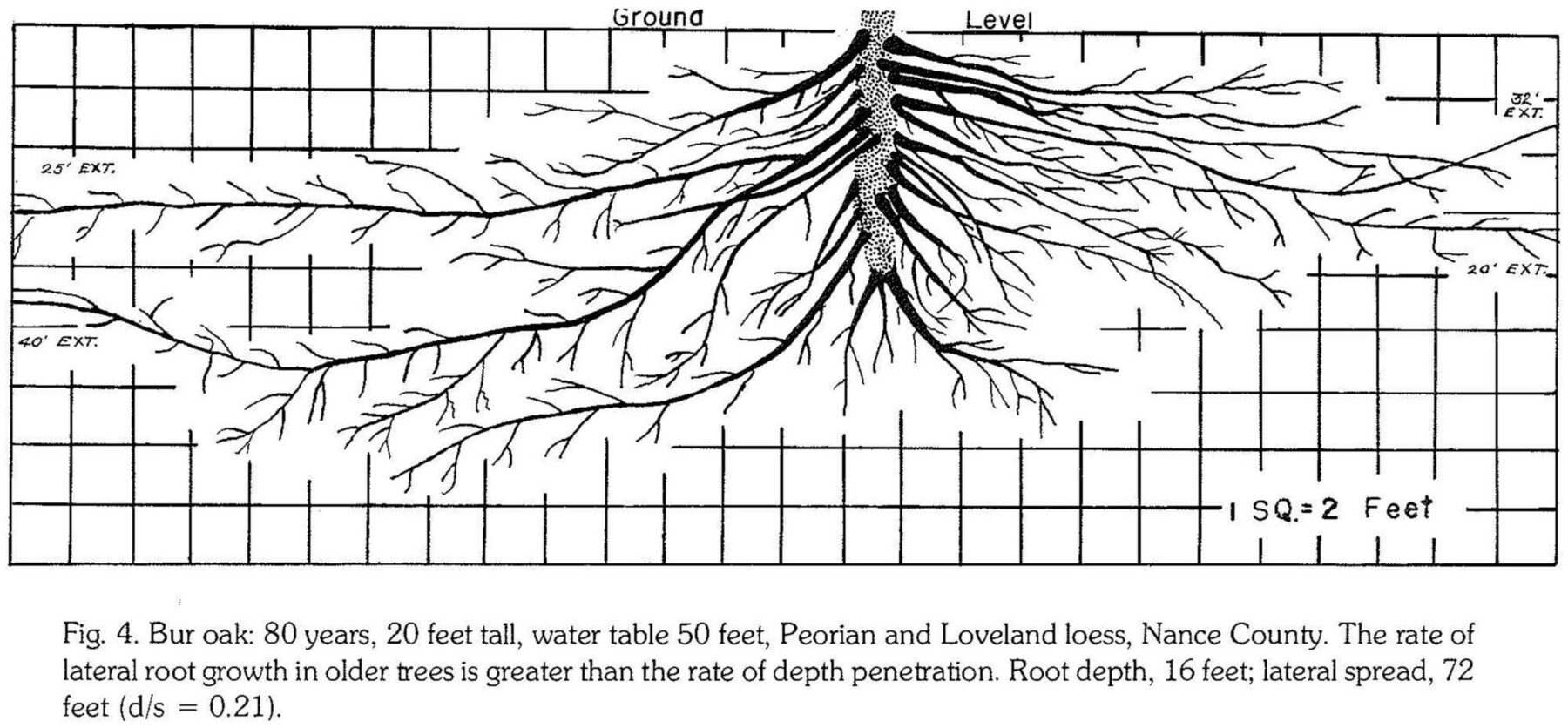Tippy Trees: Lessons From The Storm
When the storm of Aug. 10, 2020, roared through Cedar Rapids and Marion, the devastation was pretty complete. Among the casualties were large city trees, which instead of breaking apart, simply tipped over, pulling up a large root plate of earth with broken roots protruding around the edges.
Yet in fencerows and woodlots on the edge of town, the tree damage didn’t include many trees pulling up their root plates. In the natural world this type of damage is mainly due to high water tables, which creates the unfavorable combination of skimpy oxygen levels in the soil that discourages deep rooting, plus mushy soils that offer little anchorage for roots to cling to. For details and photos of this see my blog about root plates, dated April 2, 2020.
In the urban environment, five factors can come into play which favor overturning of root plates:
 1. Out here on the edge of the prairie, our successful native species go for deep roots where soils allow. The three drawings below from Nebraska Conservation Bulletin No. 37 are accurately measured root systems of wild seed-grown natives in eastern Nebraska. For details about the origins of these drawings see my blog from June 22, 2017.
1. Out here on the edge of the prairie, our successful native species go for deep roots where soils allow. The three drawings below from Nebraska Conservation Bulletin No. 37 are accurately measured root systems of wild seed-grown natives in eastern Nebraska. For details about the origins of these drawings see my blog from June 22, 2017.
These natives are slow growing and so not commonly planted. Our fast growing natives like silver maple and cottonwood are floodplain species, adapted to high water tables and not inclined to develop tap roots.
2. Subdivisions are often built by leveling the project area, pushing hilltops into valleys, and compacting all so there are not settling problems later, which can crack concrete slabs and buried pipes. The Proctor test is routinely run all around each site to ensure the best compaction for those soils. Then in order to grow lawns, a thin topdressing of topsoil is replaced in yards over the compacted soil (one prairie aficionado described these bluegrass lawns as “drug-dependent rugs”). This situation does not favor development of taproots, so trees grow mostly shallow laterals, going for water, nutrients and stability.
3. Having wide-spreading shallow laterals does help provide stability during windstorms. But with people’s desire for a green bluegrass lawn all summer they water and fertilize it, which also waters and fertilizes their trees. The trees then have less incentive to grow out further, especially if their shallow roots are also confined by concrete footings of house and garage.
4. People want quick results, so they purchase nursing stock which is ball and burlapped or transported in large pots. This means most of the taproot and laterals have been cut off to form the root ball. When our native upland oaks, walnuts and hickories grow from seed, they immediately begin growing a taproot deeper than the tree is tall, going for deeper moist soil to survive the common summer drought, and later in life to anchor against storms. They do not do this later in life.
5. I’ve visited homes in North Liberty with a storm sewer drain in the backyard. The nearly flat over-compacted subsoil is impermeable, and roofs and gutters drain onto it. So without the drain there would be nowhere else for runoff to go until it overflows into basement window wells and under low doors. Taproots do not grow here, not even natives from seed.
Young city trees offer little resistance to the wind and have little risk of overturning. But as they grow older, the root systems do not keep pace with the sail area of the tops, producing a tree increasingly prone to tipping over. They become a disaster waiting to happen.
With our human species also, getting off to a poor start in youth can mean imbalance and problems later in life. Help get your kids and grandchildren off to a good start in the natural real world.







